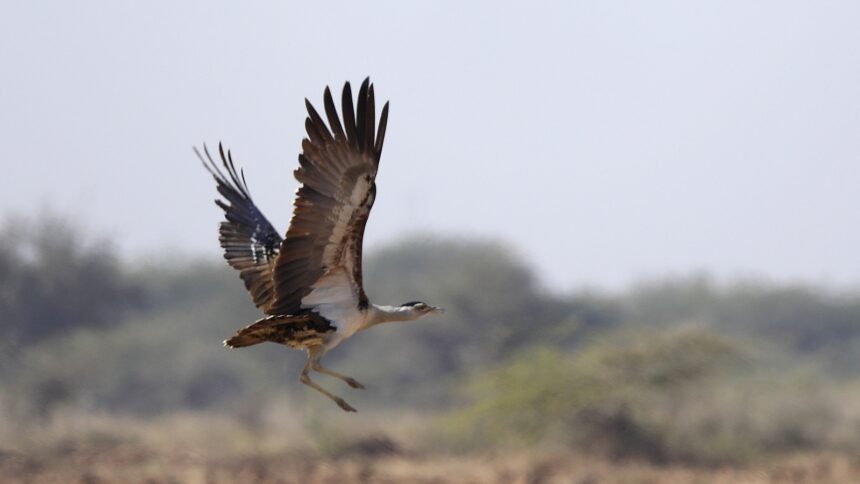The Union environment ministry’s expert appraisal committee (EAC) for the non-coal mining sector has given its nod to carry out an environment impact assessment (EIA) study for Birmania Rock Phosphate mine proposed over 400 hectares in the potential Great Indian Bustard (GIB) area in Jaisalmer, Rajasthan, as per ministry documents.
The proposal came from the central public sector enterprise, FCI Aravali Gypsum and Minerals India Ltd. Rock phosphate is mined to make phosphate fertilizers.
The proposed mining lease area falls within the potential GIB conservation zone and is located approximately 36 km from the ‘GIB Arc’, as per submissions made to the EAC. While granting a preliminary permission to carry out an EIA study, the ministry directed the government company to also assess the presence of the bird in the lease area.
The EAC said that since the mine site falls in the potential zone for the bustard conservation, the project proponent “should engage a national institute of repute to determine the presence of GIB within the lease area or nearby and submit an action plan for its conservation and management.”
The nod for an EIA study, which is procedurally known as grant of terms of reference, spells out what should be the scope of the study. This involves studying various environmental parameters and the project’s potential impact on air, water, groundwater, ecology, and wildlife. The EIA is then used for scrutinising the project to either clear or reject the proposal.
The Supreme Court is hearing a writ petition filed by retired bureaucrat M K Ranjitsinh, seeking conservation and protection of Great Indian Bustard in Rajasthan and Gujarat. As part of the ongoing case, the Supreme Court accepted the classification of the critically endangered bird’s habitat into three different zones — priority areas, additional important areas and potential areas — based on their value for long-term conservation.
Potential areas are large open landscapes where the bird might thrive. Jaisalmer in western Rajasthan is the most important home to the bird, whose numbers are estimated to be below 150. These areas have also been used to balance the conservation needs of the bustard with the growing renewable energy (wind and solar) projects.
Story continues below this ad
The EAC also said that the project proponent should comply with the Supreme Court’s orders on the issue and submit a compliance report at the time of environmental appraisal. Further, it said that “blasting studies should be conducted incorporating effects on local fauna and habitats of Great Indian Bustard.”
Wildlife biologist Sumit Dookia, faculty at Guru Gobind Singh Indraprastha University, Delhi, and Honorary Scientific Advisor to the ERDS Foundation, which works on community-led bustard conservation in Rajasthan said that based on the mine location submitted to the EAC, the presence of the endangered bird was recorded by community volunteers back in 2012-13.
Stay updated with the latest – Click here to follow us on Instagram
© The Indian Express Pvt Ltd









